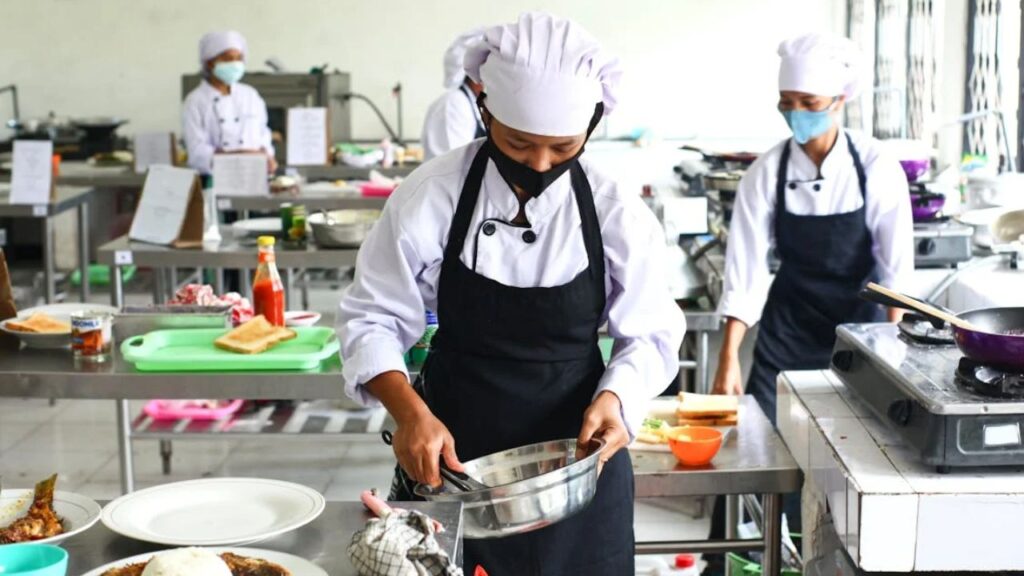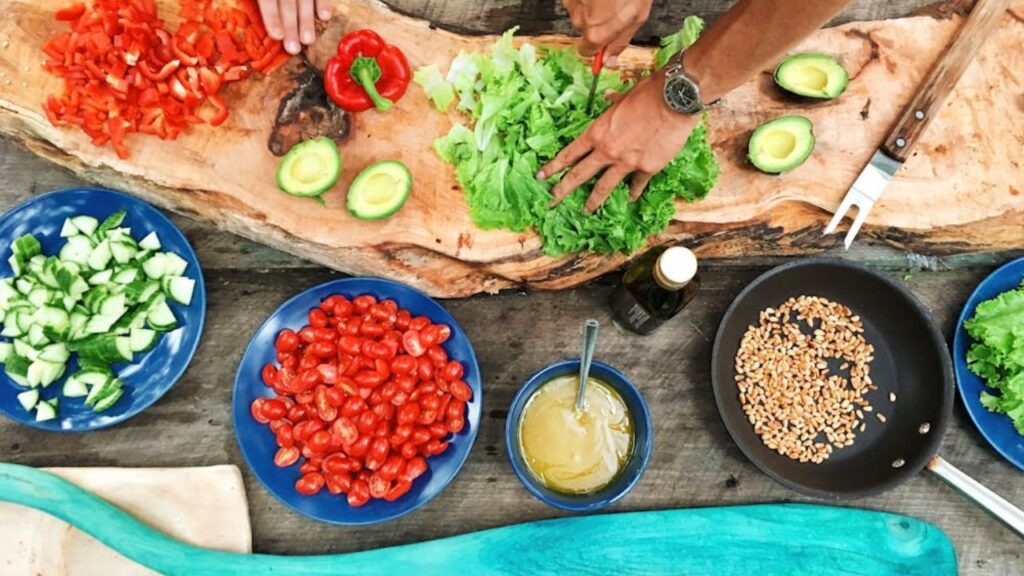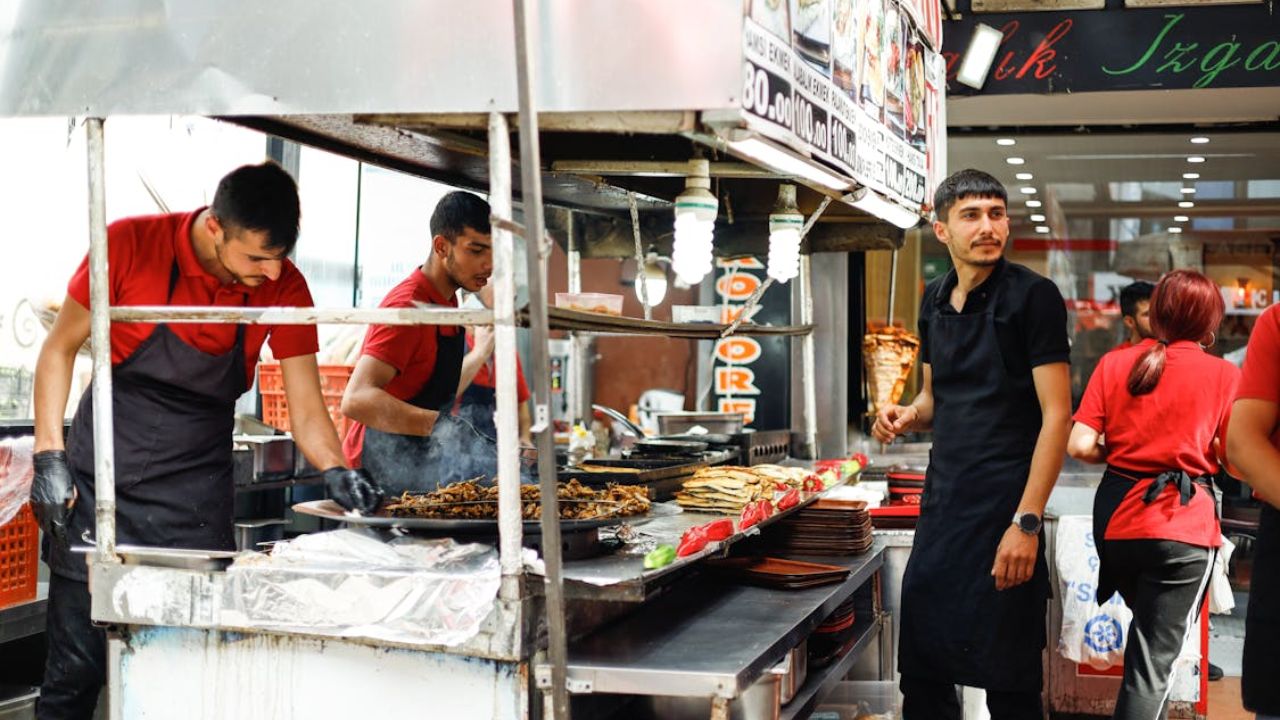A lone chef leading the kitchen is changing. 3 chefs are increasingly driving the most inventive, profitable culinary companies. This paradigm-shifting trio uses varied abilities, views, and energies to build something larger than its parts. Imagine three culinary geniuses working together under a single vision unleashing creativity, operational power, and unmatched problem-solving. This framework goes beyond cooperation to develop a foundation that can withstand industry storms, push creative limits, and provide outstanding experiences. Exploring the dynamics, rewards, and problems of this trio of chefs shows why this model is catching imaginations and palates worldwide, showing that three brains in the kitchen are better than one for significantly advancing culinary quality.

Why 3 Chefs Create Unmatched Kitchen Energy
Three culinary professionals working together creates powerful synergy. A trio creates a balanced dynamic, while a duet or larger group could split or diffuse. Every chef has their own unique manner of cooking and making food. One chef might be an expert at making fancy pastries, another might be an expert at bold, cosmopolitan tastes and fermentation, while yet another would be an expert at precision butchery and traditional cooking methods. This variety drives creativity. Three chefs exchange ideas quickly, elaborating on, refining, or questioning each other’s ideas. Constant information and skill sharing encourages innovation, resulting in innovative meals and operational efficiency that a single chef or duo could fail to attain. This bright spirit permeates the kitchen and drives the staff toward lofty objectives.
How a Trio of Chefs Divides and Conquers
A trio of cooks needs defined, flexible roles and duties to succeed. This is about strategically using individual abilities to cover all key areas of operating a complicated kitchen, not strict hierarchy. One chef often takes on the visionary role, creating the idea, cuisine, and artistic identity. The operational maestro may control logistics, inventories, scheduling, and service flow, keeping the engine running smoothly night after night. The third often manages staff training, mentoring, kitchen culture, and front-of-house and supplier relations. This deliberate separation enables each chef in the trio to specialize in their area of specialty, reducing burnout and ensuring every aspect of the restaurant is covered. Chefs must smoothly switch positions to establish a unified and resilient leadership front.
Innovation Ignited by Three Culinary Minds
Three chefs working together drive culinary innovation. The creative process changes drastically. One chef’s notion is promptly analyzed, extended, and elevated by the other two during brainstorming. One person’s distinctive ingredient, the second’s cooking style, and the third’s unexpected textural aspect or presentation philosophy may inspire a meal. This continuous, multi-directional feedback loop keeps creativity flowing. The three pushes each other’s limits, mixes varied cultural influences and technical backgrounds as a single chef seldom could. Multiple expert opinions on taste balance, appearance, and practicality speed up and deepen dish development. This setting creates intriguing meals and encourages measured creative risks backed by the group’s knowledge.
Ensuring Harmony Among Three Strong Personalities
The potential is huge, but managing a trio of cooks needs intentional effort to overcome hurdles. Harmonizing three strong, often conflicting personalities and egos is typically the most challenge. If communication is lacking, menu and staff management disagreements may lead to conflict. Instead of a single chef’s vision, agreement or a defined structure for deadlocks might hinder decision-making. To avoid anger, all three chefs must be recognized properly for their work. You need to talk to each other directly, honestly, and often. Respect, eliminating problems before they happen, and the company’s goal are very important. Check-ins for work and personal matters make things easier. By overcoming these tendencies, a leadership team becomes resilient and adaptable.
Iconic Trios in Culinary History
Famous culinary teams benefit from the three-chef concept. Keller, Benno, and Hollingsworth worked at The French Laundry simultaneously. Individual ideas and bursts of genius helped the restaurant become famous globally. The revolutionary elBulli in Spain was created by Ferran Adrià, his brother Albert Adrià (who understands sweets and new ideas), and Oriol Castro (who came up with innovative methods to accomplish things). Rasmus Munk (vision), Tobias Pedersen (operations), and Simon Grimstrup (pastry) are The Alchemist’s Copenhagen chefs. They collaborate to produce an innovative, five-sense experience. These exceptional chefs prove that working together, sharing aims, and trusting one other can create classic dishes that will inspire cooks for centuries.

Keys to Forming a Successful Chef Trio
The three of you can operate together when you all agree. Have faith in and respect each other. Along with their technological skills, think about their work ethic, how they communicate, the cuisine they provide, and their corporate ideas. Find couples that have strengths and faults that work well together. Techies need fresh ideas, and visionaries need aid. Look over everyone’s duties and how they make decisions before you sign. How does being a leader work? Is it a fair democracy, or does one person have power over certain sections of it? Everyone has to agree on the project’s aims, audience, and purpose. These three chefs need to work for the same things. Try pop-ups or cheap partnerships before starting a restaurant.
Collaborative Genius Across Three Palates
With three chefs, menu creation is richer. Conceptualizing dishes becomes a workshop. One chef could use a seasonal item, another a traditional approach from their history, and the third a modernist touch or unusual match. The three culinary experts must approve a meal before it is served, thus this multi-palate method insures thorough tasting and refining. Balance, spice, texture, and creativity are their challenges. This approach creates more engaging and diversified meals by effortlessly integrating culinary traditions and skills. Sharing menu invention responsibility prevents creative tiredness. Three wits exploring novel food energizes seasonal changes. The finished dish is an amazing mix of cooking skills and creativity that shows off their combined knowledge, skills, and passion.
Training Elevated by a Trio of Experts
Three chefs offer an unmatched atmosphere for staff growth and mentoring. Junior cooks and sous chefs gain from more knowledge, skills, and instructional approaches. The first chef may painstakingly teach knife skills, the second explain sous-vide or fermentation science, and the third encourages taste exploration. This variety of training boosts learning enormously. Even during busy service, a senior chef is more likely to lead, correct, and assist the team with the trio of chefs. Junior workers also see leaders collaborate and discuss professionally, modeling workplace skills. The chefs mentor one other, learning from each other’s specializations and experiences, creating a culture of continual development that raises the kitchen staff’s skill level.
Service Perfected by Tripartite Leadership
A well-coordinated trio of cooks enhances the dining room experience. With three managers, consistency soars. One chef may speed up service, another gathers input and ensures smooth communication with front-of-house, while the third meticulously oversees pass and dish quality. This multifaceted control ensures that every meal satisfies stringent criteria for timing, temperature, appearance, and seasoning. The three chefs method is resilient because another chef may quickly step in if a station has a problem without losing focus. Guests benefit from daring, precisely produced dishes reflecting the leadership’s expertise and commitment. The planned perfection and imaginative confidence make the meal a show, not simply supper.
The Business Acumen of a Chef Trio
The benefits of three chefs go beyond culinary inventiveness to company management. A chef may lack knowledge in economics, marketing, human resources, and strategic planning to run a successful restaurant. A balanced trio of cooks may share these duties. One spouse may be good at budgeting, cost management, and vendor negotiations. Another may be good at branding, social media, and community connections. Third, consider staff development, compliance, and operational systems. Collective business information improves risk management, decision-making, and sustainability. Three chefs may develop solutions to growing expenses or shifting market trends with more perspective. Their network of suppliers, industry connections, and possible investors is also much larger, opening doors and offering chances that a lone operator or duo would not have.

The Evolution of Kitchen Leadership
The idea of three chefs running a kitchen may not just be a trend; it may be the start of a new way of leading in the kitchen. Restaurants are adding more sustainable practices, new technologies, intricate tasting menus, and increasing customer expectations, which may make executive chefs work too hard. The trio of chefs structure distributes the massive physical, mental, and creative strain sustainably. It protects against burnout and plans succession. Additionally, its collaborative, idea-rich workplace matches diners’ quest for ongoing innovation and new experiences. The solo chef or chef-owner model will always exist, but many high-profile culinary trios have shown its feasibility and power. It addresses the many issues of operating a world-class culinary enterprise in the 21st century with maturity and strategy.
Solo vs. Duo vs. Triumphant Trio (3 Chefs)
| Feature | Solo Chef �🍳 | Chef Duo 👥 | Trio of Chefs ✨ |
| Creative Synergy | Limited ideas; relies on personal vision. | Dynamic exchange; risk of polarization. | Explosive innovation through diverse perspectives & constant idea refinement. |
| Workload & Burnout | High risk; carries all operational/creative burden. | Shared duties; imbalance can cause friction. | Optimal distribution; roles leverage strengths & prevent burnout. |
| Decision Making | Fast but unilateral; limited perspectives. | Collaborative but can deadlock without clear roles. | Balanced input + built-in checks; combines agility with depth. |
| Mentorship & Training | Single teaching style; limited bandwidth. | Two approaches; gaps in expertise possible. | 360° skill development; staff learn from multiple experts & techniques. |
| Service Resilience | Vulnerable if chef is absent/overwhelmed. | One can cover the other; strain during crises. | Unmatched backup; always leadership coverage for flawless execution. |
| Business Acumen | Skills often siloed; gaps in finance/marketing are common. | Broader than solo; may lack depth in key areas. | Holistic expertise; combines culinary vision with operational/financial savvy. |
| Menu Innovation | Limited by one palate/experience; slower evolution. | Stronger than solo; creative differences may stall progress. | Multi-palate refinement; dishes rigorously tested & creatively elevated. |
| Long-Term Viability | High burnout/attrition risk; succession challenging. | More stable than solo; relies heavily on partnership health. | Built-in sustainability; shared vision + redundancy = enduring success. |
The Unbeatable Advantage of Culinary Triangulation
In gastronomy’s competitive world, enlisting three chefs is genius. This triad paradigm generates phenomenal synergy, distributes crushing responsibility, inspires unrelenting innovation, and strengthens operational resilience. It takes dedication to manage interpersonal relationships, but the results include revolutionary menus, great consistency, a healthy kitchen culture, and a sustainable company. Effective culinary trios have launched renowned restaurants and interesting new companies. Three abilities, visions, and expertise come together to create a leadership force that can reach heights that individuals or couples can’t. In the always changing world of cooking, forming or joining a strong group of three chefs may be the finest way to push the limits, build enduring institutions, and make amazing meals.
Why the Triumphant Trio is Culinary’s Winning Formula
Three cooks change culinary leadership: The tripartite approach reduces chef fatigue by spreading creative, operational, and emotional burdens over three competent shoulders to meet modern food’s complex, overwhelming demands. Thought, method, and culture inspire innovation. Other leaders help maintain the kitchen when one leader has a personal or professional issue. Each meal is consistent and sophisticated thanks to three chefs’ critical palates and many controls. Mentorship and knowledge boost training. Integrated finance, marketing, and operations boost business. Manage three strong personalities requires conscious effort and clear communication, but the trio of chefs model’s rise is due to its powerful ability to generate sustained excellence, groundbreaking creativity, operational stability, and a more rewarding and sustainable path to culinary greatness than the solitary chef As proved by renowned institutions and intriguing new enterprises, three chefs effectively integrated create an impregnable foundation for success in today’s tough culinary market.
FAQs
1. Why are 3 chefs better than just one head chef?
Three chefs work together to share the large burden (which keeps them from burning out), come up with more new ideas, and give better backup during busy services. This leads to more creativity and consistency.
2. How do the 3 chefs split up the work?
Different persons are in charge of training, culture, personnel, operations, and creative vision. You could need their aid!
3. Doesn’t having 3 chefs lead to arguments and clashes?
It’s hard when strong personalities collide. From the outset, defined responsibilities, respect for one other, and a common goal are all important for converting disputes into creative fuel instead of battles.
4. What’s the biggest benefit for the restaurant of having a chef trio?
The three of them bring together business capabilities (financial, marketing, and HR) that one chef would not have, which makes the overall operation wiser, stronger, and better able to deal with problems.
5. How does the “3 chefs” model actually improve my dining experience?
The chefs help each other make sure every item is excellent, which means you get more innovative, well-tested menus (tuned by three experienced palates), exceptionally uniform execution (more oversight), and smoother service.




